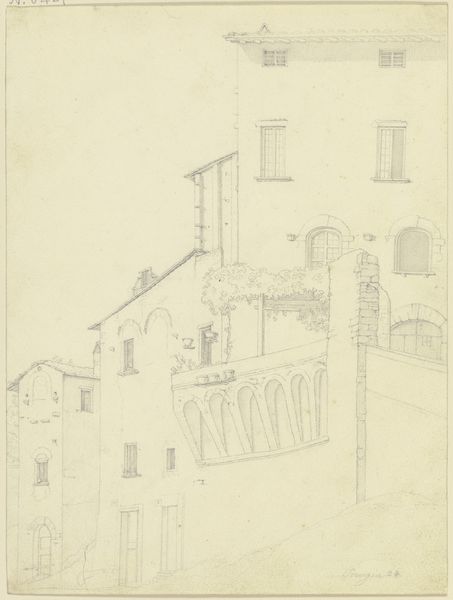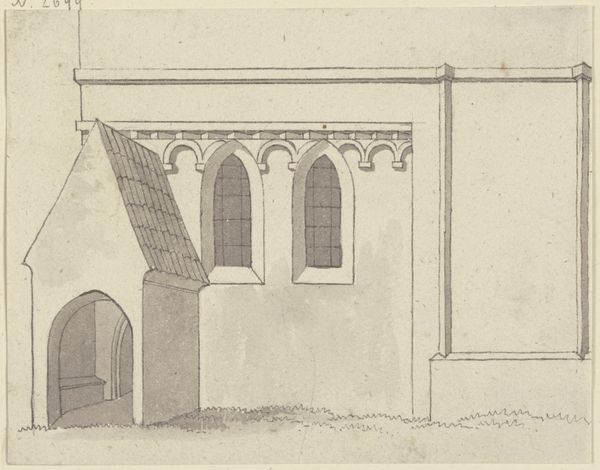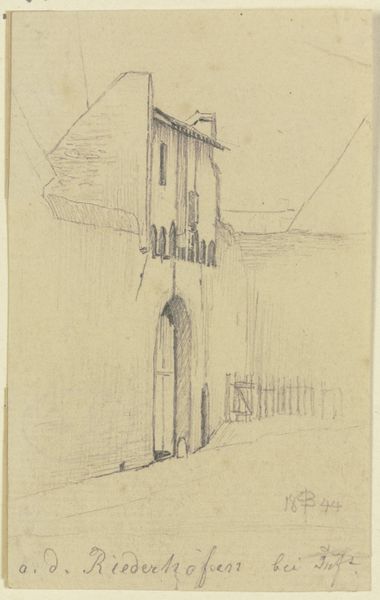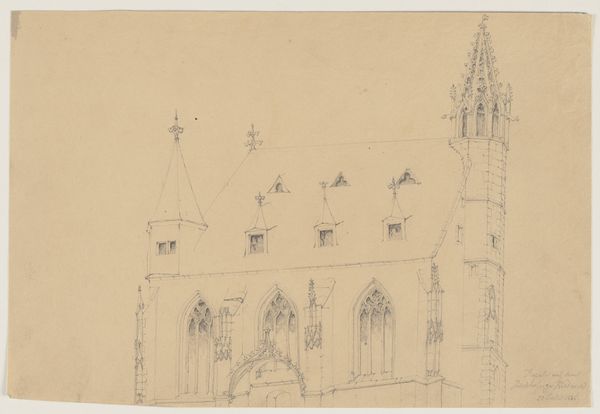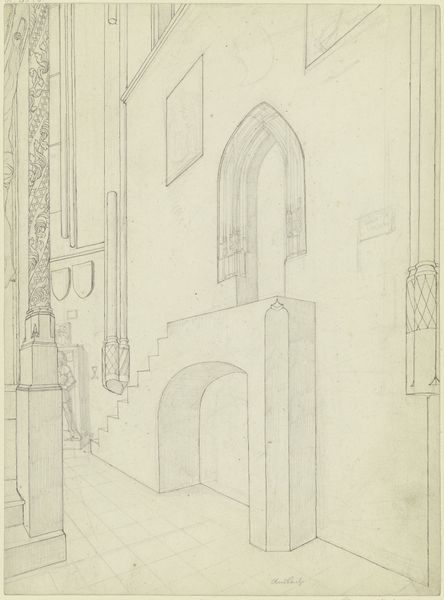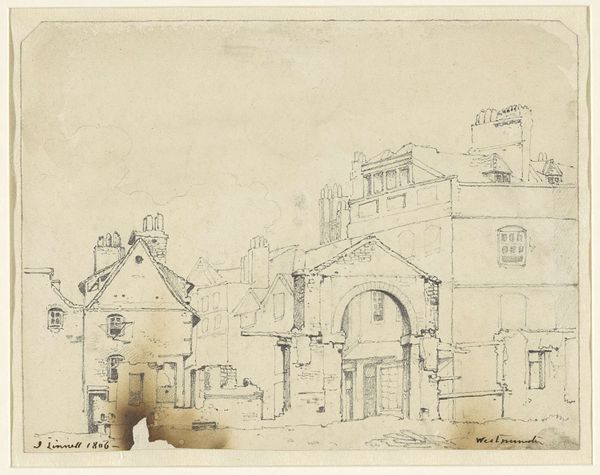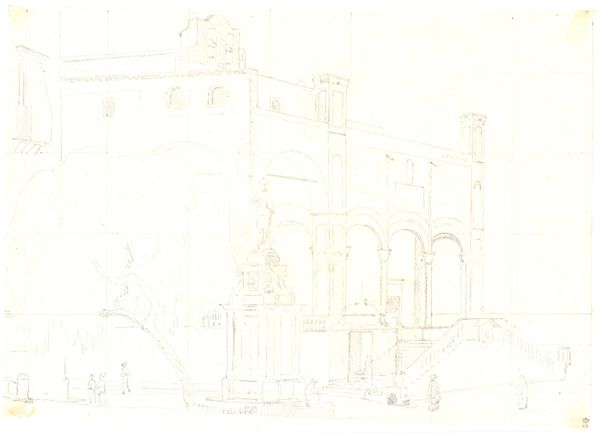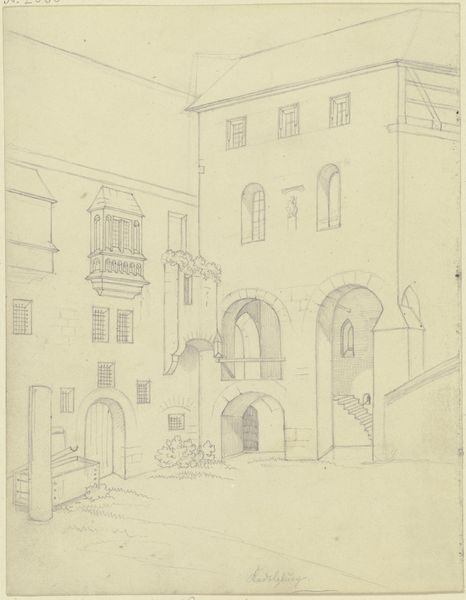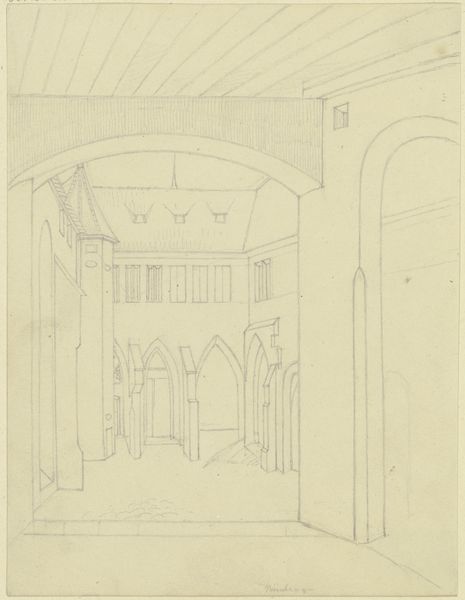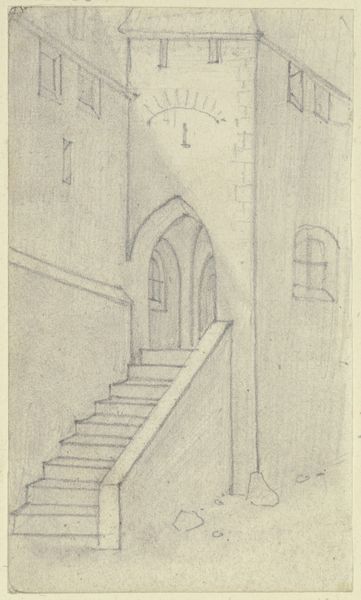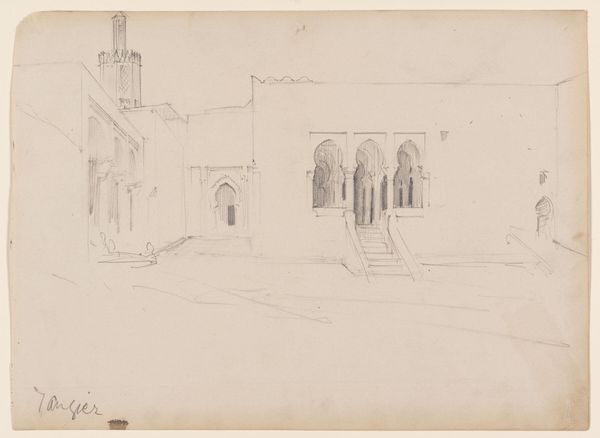
Parti af den ydre, vestlige del af St. Knuds kirke i Odense 1844
0:00
0:00
drawing, paper, ink, architecture
#
drawing
#
landscape
#
etching
#
paper
#
ink
#
romanticism
#
architecture
Dimensions: 205 mm (height) x 282 mm (width) (bladmaal)
Curator: This is Dankvart Dreyer's "Parti af den ydre, vestlige del af St. Knuds kirke i Odense," created in 1844, using ink on paper. Editor: The sketch feels hauntingly peaceful. It is rendered in sparse lines, almost incomplete, which imparts a delicate, ethereal quality. The starkness evokes a sense of melancholy, a silent testament to enduring structures. Curator: Indeed. Dreyer positions the church not just as a building, but as a protagonist in a larger drama. In Denmark during this period, the church played a crucial role. Dreyer perhaps, uses the imposing gothic structure to question religion's role amidst societal shifts and philosophical questioning during the 19th century. How do you read its iconic language in relation to Romantic ideals? Editor: Churches, and gothic windows such as we see isolated on the right-hand side of the paper, often symbolize spiritual enlightenment or a connection to the divine. It's a fascinating duality. Dreyer captures the iconic structure, while the sparseness feels deeply personal. The very act of sketching emphasizes its human construction but what about its historical context? How did St. Canute resonate with Dreyer’s contemporaries? Curator: St. Canute’s church was and remains a monumental edifice representing regal authority but also Danish identity. Dreyer perhaps used it to dissect national myths. By depicting its physical form so starkly he prompts a reimagining of power structures within that society and who had access to religious spaces. I wonder, if ordinary Danes felt distant to such monumental architecture despite its ubiquity. Editor: A very potent way to see this piece. The human figure is dwarfed, rendered so subtly, suggesting a loss of individual identity or power. Perhaps the small human at the foot of the structure further highlights its immense power. What endures—the imposing architecture or the human spirit? Curator: Precisely. This piece asks us to see the intersection of faith, authority, and individual experience. I see it as a visual poem inviting us to contemplate societal frameworks that influence personal narratives. Editor: Absolutely. The sketch reminds us that symbols continue to evolve, and interpretations transform alongside social landscapes. The human spirit seems always to exist—existing under even monumental architectures.
Comments
No comments
Be the first to comment and join the conversation on the ultimate creative platform.
